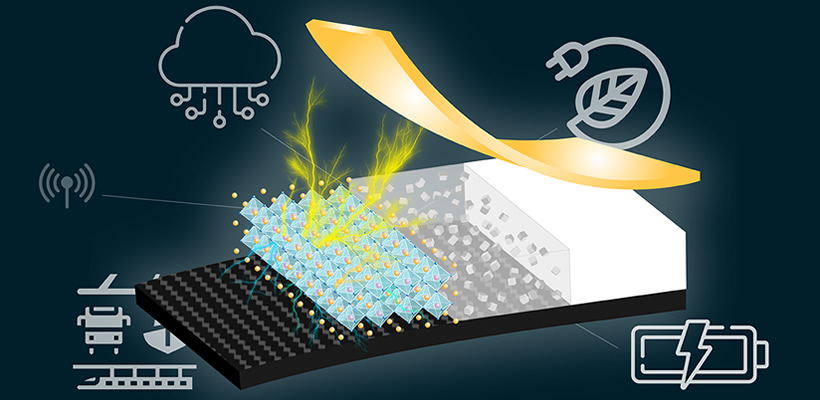Context:
Recently, A new piezoelectric polymer nanocomposite material developed which can be useful for pressure sensing and energy harvesting applications.
Keh highlights of the research
- Researchers from the Centre for Nano and Soft Matter Sciences (CeNS), in collaboration with scientists from the National Chemical Laboratory (CSIR-NCL), Pune have developed a Security Alert System based on piezoelectric polymer nanocomposite.
- The development is based on the finding that metal oxide nanomaterials with appropriate crystal structure and surface properties, when used as fillers in a polymer composite, lead to a significant enhancement in the piezoelectric response.
- A wireless, Bluetooth-based security alert system supported by an Android application was also developed and demonstrated as a promising application with the fabricated prototype.
- The system activates upon detecting footsteps, converting mechanical energy into electrical energy, and communicates the alert wirelessly via Bluetooth.
- This study validates the poly vinylidene difluoride (PVDF)-monoclinic ZrO2 nanoparticle nanocomposites provides excellent performance for flexible, durable energy generation and pressure-sensing applications.
- This research was recently published in American Chemical Society journal ACS-Applied Nano Material.
Centre for Nano and Soft Matter Sciences (CeNS)
- It is an autonomous research institute under the Department of Science and Technology (DST), Government of India.
- The Centre was established in 1991 by an eminent liquid crystal scientist, Prof. S. Chandrasekhar, then it was known as the Centre for Liquid Crystal Research and in the year 2010, the name was changed to the Centre for Soft Matter Research.
- It conducts materials research across all length scales, specializing in metal and semiconductor nanostructures, liquid crystals, gels, membranes, and hybrid materials, with strong ties to institutions and industries both in India and abroad.
National Chemical Laboratory (CSIR-NCL), Pune
- It was established in 1950, and is a constituent laboratory of the Council of Scientific and Industrial Research (CSIR).
- CSIR-NCL is a science and knowledge based research, development and consulting organization.
What are Piezoelectric polymers?
- They are polymers that can generate electric charges on the surface under pressure/strain thus converting mechanical energy into electrical energy.
Advantages of Piezoelectric Polymers:
- Non-Toxic: They are safe for various applications.
- Highly Flexible: This makes them suitable for use in flexible and wearable devices.
- Eco-Friendly: They are biodegradable and environmentally friendly.
- Versatile Applications: Their properties allow them to be used in a wider range of applications that require flexibility and biocompatibility.
How researchers prepared a polymer nanocomposite material?
- The researchers synthesized two zirconia-based metal−organic frameworks (UiO-66 and UiO-67) which were converted to zirconia nanoparticles with exquisite control over their crystallographic phases namely monoclinic and tetragonal phases.
- Polymer nanocomposite films were then fabricated by incorporating these nanoparticles with different crystal structures into a well-known piezoelectric polymer, poly (vinylidene difluoride) (PVDF).
- Polymer nanocomposite with monoclinic zirconia nanoparticles produced from UiO-66 outperformed other derivatives and had greater piezoelectric output performance than pure polymer.

